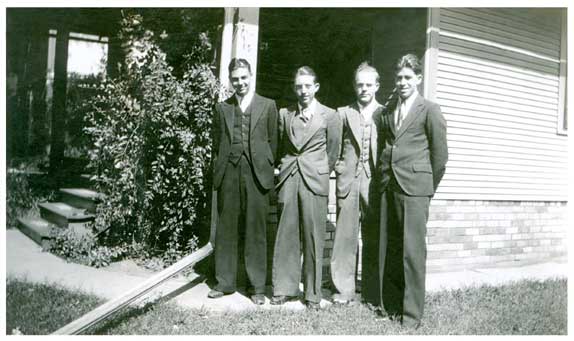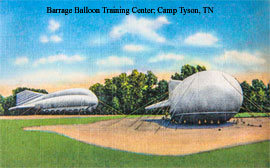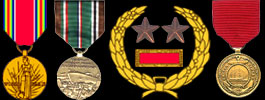| North
High School Wall of Honor Graydon LeRoy McDonald Class of June, 1931 |
 |
||||||||||||||||||||||||||||||||||||||||||||||||||||||||||||||||||||||||||||||||||||||
| Research done by Claradell Shedd, Class of 1953. | |||||||||||||||||||||||||||||||||||||||||||||||||||||||||||||||||||||||||||||||||||||||
|
|||||||||||||||||||||||||||||||||||||||||||||||||||||||||||||||||||||||||||||||||||||||
|
|||||||||||||||||||||||||||||||||||||||||||||||||||||||||||||||||||||||||||||||||||||||
| 12th Coast
Artillery Training Battalion The attack on Pearl Harbor showed that the Coast Artillery, despite inclusion of the anti-aircraft mission, was ineffective against a mass air attack. Pre-war anti-aircraft planning had been very inadequate, with few weapons allocated, and the coast defense guns had become almost irrelevant. They were positioned to keep enemy ships out of a friendly harbor, but that was all they could accomplish. The Japanese invaded the Philippines shortly after Pearl Harbor, bringing the Harbor Defenses of Manila and Subic Bays into the war along with the other US and Filipino forces in the archipelago. The Japanese initially landed in northern Luzon, far from the defenses of Manila Bay. Although the Coast Artillery did their best, their weapons were poorly positioned against the direction of enemy attacks and vulnerable to air and high-angle artillery attack. Eight 8-inch railway guns had been deployed to the Philippines in 1940, but six were destroyed by air attack while entrained in response to the initial landings, and the other two were placed in fixed mountings on Corregidor, but lacked crews and ammunition.[30] The 12-inch mortars of Battery Way and Battery Geary were probably the most effective coast defense weapons in the Battle of Corregidor, but again were vulnerable to attack. The US forces surrendered on 6 May 1942, after destroying their weapons. The Coast Artillery faced two priorities during the war: mobilization and modernization. The National Guard was mobilized in 1940 and the Reserve units were mobilized in 1942. Most of the reserve regiments not designated as anti-aircraft in 1925 appear to have been disbanded by World War II.[31] Besides new construction at most harbor defenses, the standard anti-aircraft gun was upgraded from the 3-inch gun M3 to the 90 mm gun M1. Except for the early-war fighting in the Philippines, the anti-aircraft branch was the Coast Artillery's only contribution on the front lines of World War II; almost all mobile heavy artillery overseas was operated by the Field Artillery. The only time a post-1895 fort in CONUS was attacked was the Bombardment of Fort Stevens, Oregon by the Japanese submarine I-25 in June 1942. Battery Russell was attacked with a deck gun, but the fort's commander refused to return fire for fear of revealing the battery's position. Other than some severed telephone cables, no significant damage to either side occurred. In 1944, with about 2/3 of the initially projected new batteries complete and most naval threats neutralized or destroyed, work was stopped on the remaining new batteries. The Endicott- and Taft-period guns were scrapped and the Coast Artillery drawn down in size. The regiments were broken up into battalions in 1943-44, in line with an Army-wide policy for all units except infantry.[32] When the war ended it was decided that few (and soon no) gun defenses were needed, and by 1948 almost all of the seacoast defenses had been scrapped. With only the anti-aircraft mission left, the Coast Artillery was disestablished and the anti-aircraft and field artillery branches were merged in 1950.[2] Some of the mine planter vessels were transferred to the Navy and designated Auxiliary Minelayers (ACM, later MMA). The anti-aircraft and field artillery branches were later separated again and regiments eventually re-appeared. In the 1950s through early 1970s, the Anti-Aircraft Command and its successors operated the Nike-Ajax and Nike-Hercules missiles that, along with the US Air Force's BOMARC, were the successors to the Coast Artillery in defending the US mainland and friendly countries. 308th CA Barrage Balloon Battalion Camp Tyson was the nation's only World War II barrage balloon training center. Established at Paris, Henry County, the camp trained servicemen to fly, build, and repair barrage balloons, which were helium- or hydrogen-filled balloons measuring thirty-five feet in diameter and eighty-five feet in length used in aerial coastal defense. Made of a two-ply cotton fabric impregnated by synthetic rubber and lofted nine thousand to twelve thousand feet into the air, the balloons were nicknamed "big bags," "air whales," and "sky elephants." The massive quantities of rubber needed to construct the balloons drove up the cost of construction to between five thousand and ten thousand dollars apiece and became a factor in wartime rationing of rubber products and tires. The nearly invisible steel cables that anchored the small blimps posed the greatest danger to enemy aircraft. Arranged in concentric circles, the cables provided a shield around important buildings, factories, or strategic areas. The Nazi blitz on England and the Battle of Britain renewed the need for barrage balloons, which had proved effective in World War I antiaircraft protection. Concerned about security of coastal cities, the U.S. War Department established the barrage balloon training center about eight miles south of Paris, Tennessee, in August 1941. The two-thousand-acre camp was named for Brigadier General Lawrence D. Tyson, a distinguished World War I veteran and prominent citizen of Knoxville. Construction began in the early fall of 1941, and at its peak in December construction crews employed over eight thousand laborers to erect 450 buildings including wooden barracks, a 400-bed hospital, and a 2,500-seat theater, all of which were served by a modern water system. In March 1942 officers and enlisted men arrived in detachments of five thousand or six thousand men; by the end of the war, Camp Tyson's occupancy ranged from twenty thousand to twenty-five thousand soldiers. A 1943 expansion of the camp tripled the original two thousand acres. A well-known Henry County antebellum home, "Bowdenville," was destroyed to accommodate the expansion. British instructors, who possessed firsthand knowledge of aerial bombing, helped to instruct Americans on proper balloon training. Recruits learned how to quickly inflate and send balloons afloat and repair any punctures or damages the rubber skins received. A good crew could fully inflate and launch a balloon in less than thirty minutes.At the end of their training, balloon crews were billeted out for antiaircraft coastal duty. They sent up balloons, assisted with antiaircraft guns, and manned the searchlights that crossed the skies. 265th Army Ground Forces Band The 13th Army Band has a lineage dating back to 1930, when it was organized as the band section of the 265th Coast Artillery in Miami. The 265th Coast Artillery Band supported harbor security operations in Ft. Crockett, Texas and Ft. Greely, Alaska through World War II. In 1944, it was re-designated as the 96th Army Ground Forces Band, which served until its deactivation in 1945. Find discharge details. |
|||||||||||||||||||||||||||||||||||||||||||||||||||||||||||||||||||||||||||||||||||||||
|
|||||||||||||||||||||||||||||||||||||||||||||||||||||||||||||||||||||||||||||||||||||||
|
|||||||||||||||||||||||||||||||||||||||||||||||||||||||||||||||||||||||||||||||||||||||
|
|||||||||||||||||||||||||||||||||||||||||||||||||||||||||||||||||||||||||||||||||||||||
|
|||||||||||||||||||||||||||||||||||||||||||||||||||||||||||||||||||||||||||||||||||||||
|
|||||||||||||||||||||||||||||||||||||||||||||||||||||||||||||||||||||||||||||||||||||||
|
|||||||||||||||||||||||||||||||||||||||||||||||||||||||||||||||||||||||||||||||||||||||
|
|||||||||||||||||||||||||||||||||||||||||||||||||||||||||||||||||||||||||||||||||||||||
|
|||||||||||||||||||||||||||||||||||||||||||||||||||||||||||||||||||||||||||||||||||||||
| Died: 01/17/91; Lexington, Tennessee. | |||||||||||||||||||||||||||||||||||||||||||||||||||||||||||||||||||||||||||||||||||||||
| Music: "Wind Beneath My Wings" | |||||||||||||||||||||||||||||||||||||||||||||||||||||||||||||||||||||||||||||||||||||||
| Home
|
Back/allyears |
WWI |
WWII |
Korea |
Vietnam |
Afghanistan/Iraq |
Lyrics
|
Refs/Awards |
Contact ©2025-csheddgraphics All rights reserved. All images and content are © copyright of their respective copyright owners. |
|||||||||||||||||||||||||||||||||||||||||||||||||||||||||||||||||||||||||||||||||||||||
















